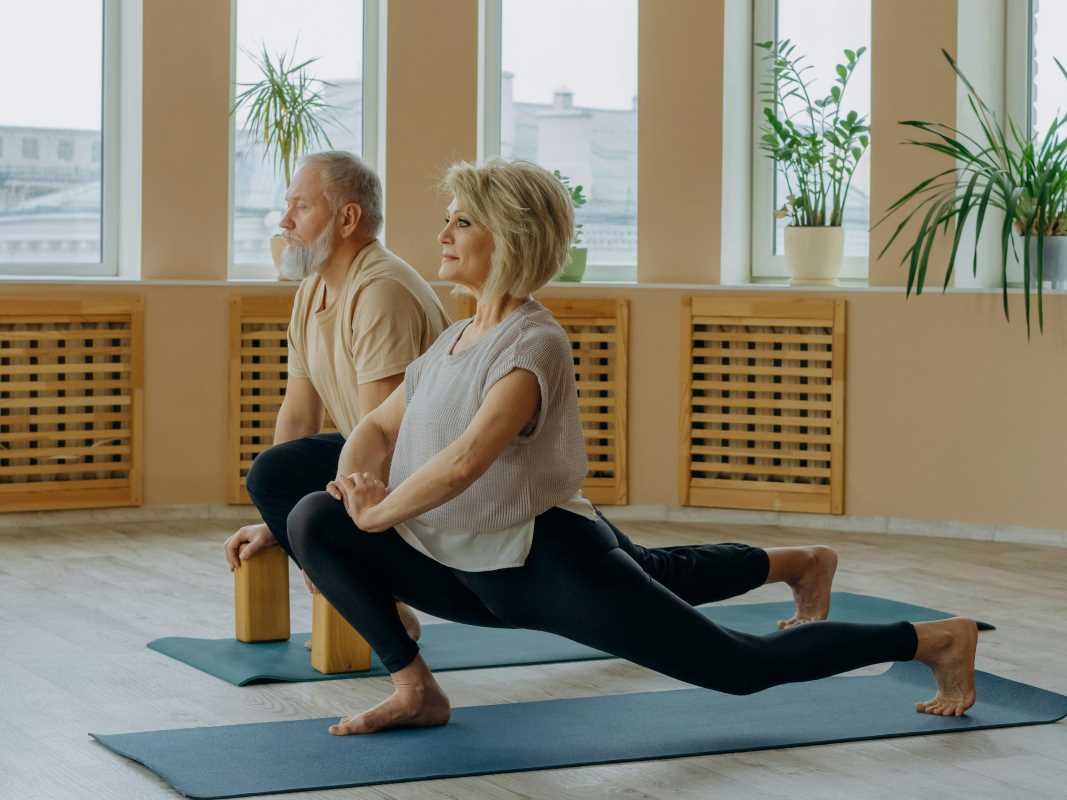The persistence of chronic pain can often lead to a debilitating cycle where physical discomfort fosters psychological stress, which in turn exacerbates the perception of pain. Breaking this cycle requires interventions that address both the physical and mental aspects of pain. Yoga, with its holistic approach, emerges as a potent tool in managing and disrupting the pain cycle. Through tailored yoga poses, individuals can experience pain relief and an overall well-being enhancement.
The Science Behind Pain and Yoga
Pain is a complex sensation influenced by both physiological and psychological factors. Physiologically, pain signals are transmitted through the nervous system to the brain, where they are interpreted and responded to. Chronic pain can lead to heightened sensitivity and changes in the brain's pain-processing regions, making the experience of pain more intense and persistent. Psychologically, factors such as stress, anxiety, and depression can amplify the perception of pain, creating a feedback loop that intensifies discomfort.
Yoga addresses both these aspects by integrating physical postures, breathing techniques, and mindfulness practices. The physical postures help stretch and strengthen muscles, improve flexibility, and enhance blood circulation, alleviating pain and reducing muscle tension. Breathing exercises and mindfulness practices help regulate the nervous system, reduce stress levels, and promote relaxation. This multifaceted approach can modulate the body’s pain response and disrupt the cycle of chronic pain.
Benefits of Tailored Yoga Poses
Customized yoga routines offer several advantages for individuals seeking pain management solutions:
- Personalization: Yoga poses can be adapted to fit individual needs and limitations, ensuring safe and effective practice.
- Improved Flexibility and Strength: Regular practice enhances muscle flexibility and strength, reducing the strain on joints and alleviating pain.
- Mental Health Benefits: Incorporating mindfulness and breathing techniques helps in managing stress and anxiety, which are often linked to chronic pain.
- Enhanced Body Awareness: Tailored poses increase awareness of the body, promoting better posture and movement patterns that can prevent pain.
- Non-Invasive Approach: Yoga provides a natural and drug-free method for pain relief, minimizing the risk of side effects associated with medications.
Common Yoga Poses for Pain Relief
- Child’s Pose (Balasana) – Gently stretches the lower back, hips, and thighs while calming the mind.
- Cat-Cow Pose (Marjaryasana-Bitilasana) – Eases tension in the spine and improves flexibility.
- Downward-Facing Dog (Adho Mukha Svanasana) – Stretches the back, shoulders, and hamstrings, relieving tension.
- Supine Twist (Supta Matsyendrasana) – Releases tension in the lower back and spine.
- Bridge Pose (Setu Bandhasana) – Strengthens the back and glutes while opening the chest.
- Seated Forward Fold (Paschimottanasana) – Stretches the spine, hamstrings, and lower back.
- Legs-Up-The-Wall Pose (Viparita Karani) – Promotes circulation and reduces swelling or tension in the legs.
- Pigeon Pose (Eka Pada Rajakapotasana) – Opens the hips and relieves lower back pain.
- Sphinx Pose – Gently stretches the lower back and strengthens the spine.
- Corpse Pose (Savasana) – Encourages full-body relaxation and stress relief.
Case Studies and Real-Life Examples
Numerous individuals have found significant relief from chronic pain through personalized yoga therapy. For instance, Jane, a 45-year-old office worker, struggled with lower back pain for years. After incorporating tailored yoga poses into her routine, she reported a noticeable decrease in pain intensity and an improvement in her mobility. Similarly, Mark, suffering from arthritis, experienced reduced joint stiffness and enhanced flexibility through a customized yoga regimen, leading to better quality of life.
These real-life examples illustrate the potential of yoga as a complementary therapy for pain management. By addressing both the physical discomfort and the mental strain associated with chronic pain, personalized yoga practices can contribute to sustainable pain relief and improved overall health.
How to Start a Tailored Yoga Routine
Embarking on a tailored yoga practice requires careful planning and consideration of individual pain management needs. The first step is to consult with a healthcare professional or a certified yoga therapist to assess specific conditions and limitations. This consultation ensures that the selected poses are appropriate and safe, minimizing the risk of injury.
Once a suitable plan is in place, starting with basic poses and gradually incorporating more advanced postures is beneficial as strength and flexibility improve. Consistency is key; practicing yoga regularly, even for short durations, can lead to significant benefits over time. Integrating breathing exercises and mindfulness techniques can enhance the effectiveness of the yoga routine by promoting relaxation and mental clarity.
Potential Challenges and Solutions
Integrating yoga into a pain management plan can present several challenges. One common obstacle is maintaining regular practice amidst a busy schedule. To overcome this, individuals can set aside specific times each day dedicated to yoga, making it a non-negotiable part of their routine. Another challenge is the initial discomfort that new poses might cause, especially for those with significant pain or limited mobility.
To address this, it’s important to start slowly and listen to the body's signals, modifying poses as needed to ensure comfort and safety. Seeking guidance from a qualified yoga instructor can also provide personalized adjustments and support, making the practice more accessible and effective. Additionally, setting realistic goals and celebrating incremental progress can boost motivation and adherence to the routine.
Tailored yoga poses offer a multifaceted approach to disrupting the pain cycle. They address both the physical and psychological dimensions of chronic pain. By incorporating personalized yoga practices, individuals can achieve meaningful pain relief and enhance their overall quality of life.
 (Image via
(Image via





